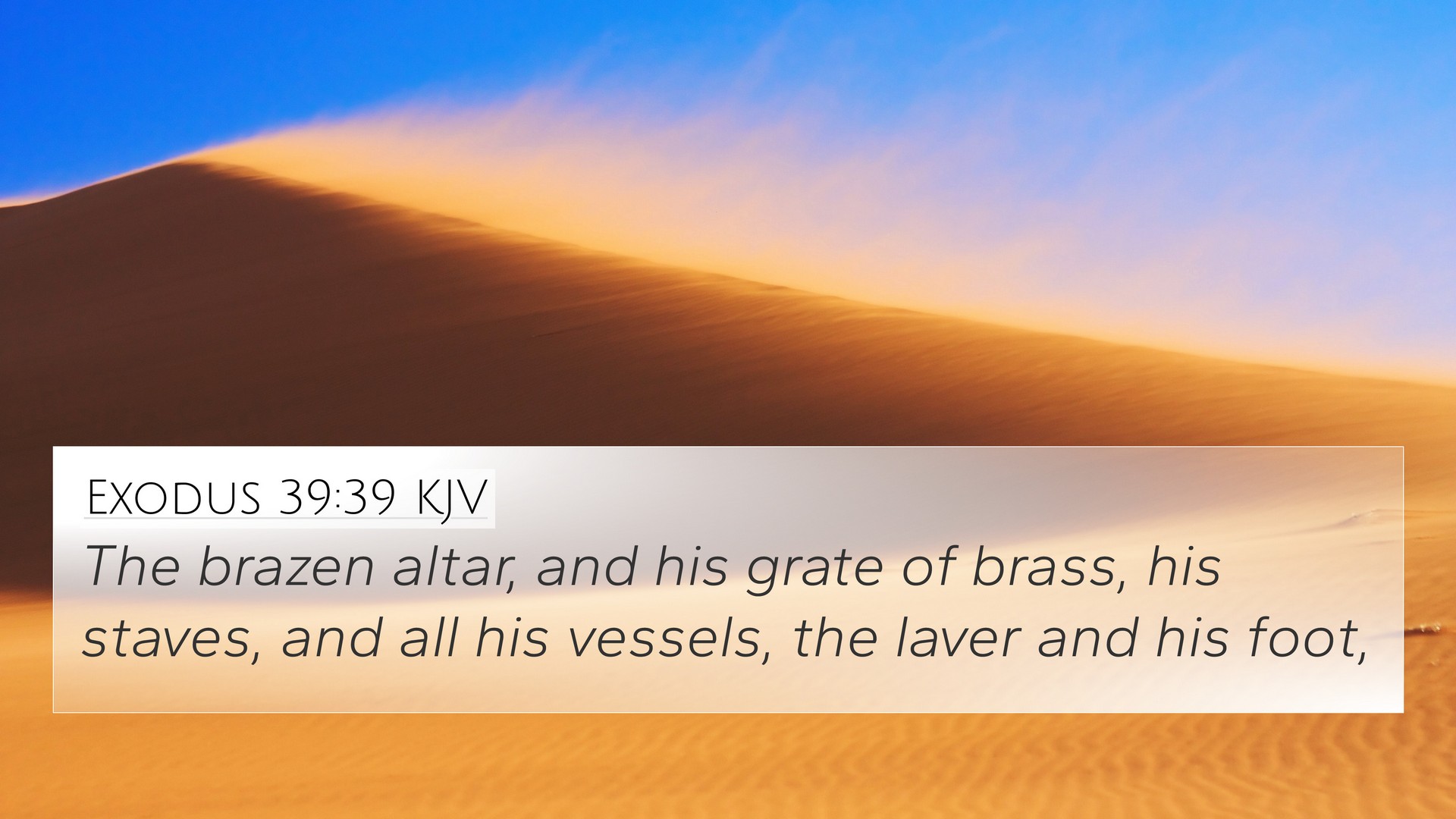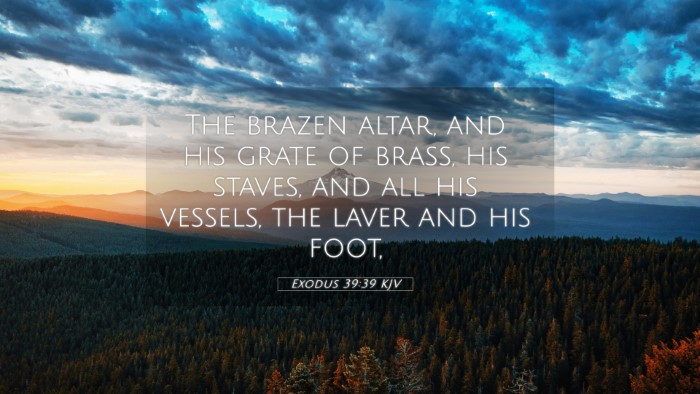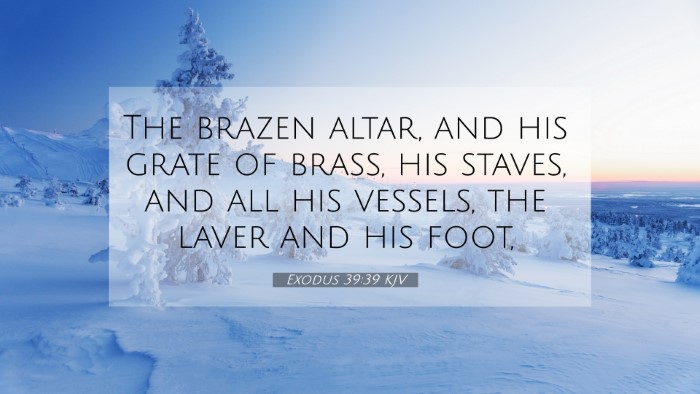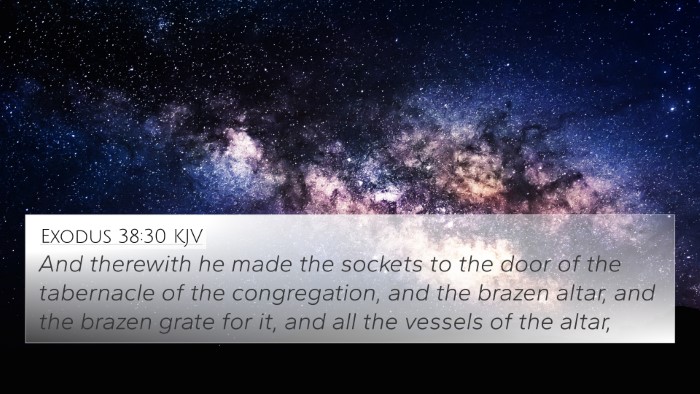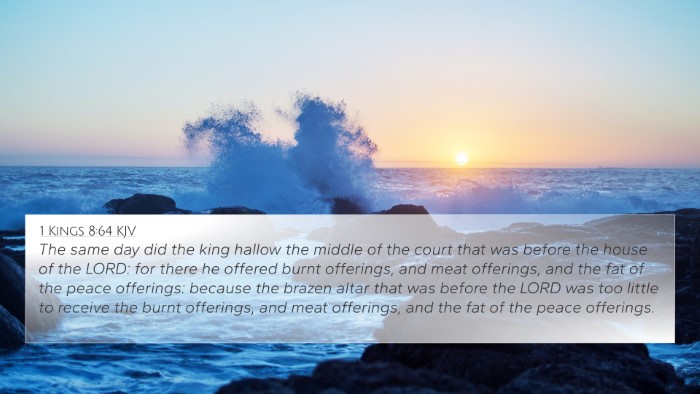Exodus 39:39 states, "The brass altar, with its grate of brass; and all the vessels of the altar." This verse concludes the detailed account of the garments and the tabernacle's structure, emphasizing the meticulous preparation of items meant for worship, which is central to Israel's relationship with God.
Meaning and Analysis
This verse encapsulates several important themes that reflect the nature of Israel's worship and the significance of the items used in the sacrificial system. Various public domain commentaries provide insights that broaden the understanding of this scripture.
Matthew Henry's Commentary
According to Matthew Henry, the detailed attention to the materials and construction of the altar signifies the importance of holiness and reverence in worship. The brass altar represents an essential element in the sacrificial system of the Israelites, where sacrifices were made to atone for sin. The mention of its "grate of brass" illustrates a refinement in the process, as fires burning the sacrificial offerings must be contained efficiently.
Albert Barnes' Notes
Albert Barnes reflects on the practicality of the brass altar's construction. He notes that brass, being durable and capable of withstanding high temperatures, symbolizes strength and permanence. This reinforces the concept of God as unchanging and steadfast in His covenant and the worship practices established for His people.
Adam Clarke's Commentary
Adam Clarke points out that the construction details provided in this verse serve as a demonstration of God's order. Each element of the altar and its surrounding tools holds a divine purpose, corresponding to the Israelites' spiritual needs. Clarke emphasizes that this signifies God’s provision for the forgiveness of sins, allowing the people to approach Him through sacrifice.
Thematic Connections
This verse can be linked to various other scripture passages that elaborate on themes such as worship, sacrifice, and God's holiness. The significance of the brass altar lays the groundwork for understanding the broader sacrificial system present throughout the Pentateuch, and its eventual fulfillment in the New Testament through Christ.
Cross-Reference Connections
- Exodus 27:1-2: Describes the construction of the altar, enhancing understanding of its dimensions and purpose.
- Leviticus 1:5: Details the sacrificial procedure, showing how the altar plays a key role in atonement.
- Hebrews 9:22: Reinforces the concept that without the shedding of blood, there is no forgiveness, connecting back to the importance of sacrifices offered at the altar.
- 1 Peter 2:5: Presents believers as living stones, drawing a parallel between the altar's significance and the New Testament understanding of sacrifice.
- Romans 12:1: Encourages believers to present their bodies as living sacrifices, echoing the themes found in the altar’s purpose.
- Numbers 28:3: Discusses daily offerings to be made on the altar, emphasizing its continual use in worship.
- Exodus 30:1: Highlights the altar of incense, further underscoring the various elements critical for worship practices.
Understanding Worship in Context
The establishment of the brass altar reflects a pattern seen throughout Scripture, where specific items are sanctified for divine use. By understanding the interconnections and the thematic elements surrounding the altar, it becomes evident how each step of the sacrificial system points towards Jesus and His ultimate sacrifice on the cross.
Conclusion
In Exodus 39:39, we observe a pivotal aspect of Israel's worship life that carries theological significance extending into New Testament revelations. The altar's details are not mere historical fact but are symbolically loaded, pointing towards the necessity of sacrifice and the holiness of God. Through further exploration of these themes and cross-references, believers can better appreciate the richness of biblical unity and the divine narrative woven throughout Scripture.
